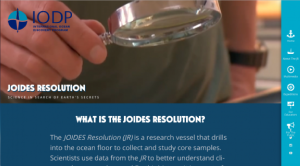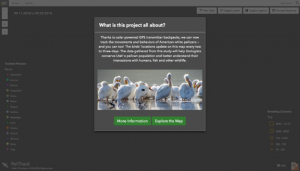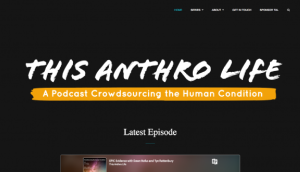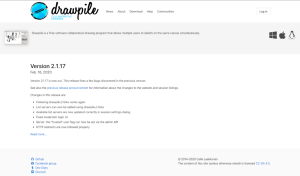Research and Education
Back to Top
|
 |
|
Statistics in Schools: Math Activities
|
Mathematics |
|
From the US Census Bureau's Statistics in Schools (SIS) program comes this collection of classroom math activities designed to "engage students by using real-life data." Here, readers will find detailed, well-developed activity plans for K-12 students, each focused on a specific topic. Activities are broadly grouped into grade-level appropriate subjects: elementary grades (e.g. "Using Fractions to Compare Amusements Parks By States"), middle school (e.g. "What is a Statistical Question?"), and high school (e.g. "Applying Correlation Coefficients - Educational Attainment and Unemployment"). Individual activities indicate the specific grade level(s) they are intended for. The webpage for each activity gives a description, states the time and materials required, and also provides a list of learning objectives and a Bloom's Taxonomy teacher's note. Each lesson also includes attractively designed and downloadable PDFs of a teacher and student version of the activity. The SIS Math Activities were created by "eight content teams comprising of teachers, subject matter experts, and standards experts in K-12 education and curriculum design," and they are designed to reflect Common Core standards. [JDC] |
|





|
|
 |
|
The Keats Letters Project
|
Language Arts |
|
While the English poet John Keats is best known for his romantic poetry such as "Ode on a Grecian Urn" and "La Belle Dame Sans Merci," he was also a prolific correspondent who wrote dozens of letters to family and friends before his tragically early death from tuberculosis in 1821 at the age of 25. Today, the Keats Letters Project explores the poet's epistolary legacy by publishing each of his letters 200 years after the day it was written, along with "a critical commentary [and] a short dissertation, aiming to shed new light on the letters, reconceiving received ideas and offering reevaluations." Launched in 2015, this ongoing project was founded by six scholars at universities around the US and includes guest commentaries on the letters from professors, scholars, and Keats fans. In its founders' words, the Keats Letters Project "hopes to offer its readers a unique connection to Keats's epistolary oeuvre, and by extension to Keats himself." [JDC] |
|





|
|
 |
|
 |
|
John Foxe's The Acts and Monuments Online
|
Religion |
|
Scholars of British history and culture may enjoy The Acts and Monuments Online (TAMO). After nearly twenty years of work, the team behind this digital project produced a definitive edition of what is commonly known as John Foxe's Book of Martyrs, originally published in 1563. Here, readers will find unabridged texts of all four editions (with marginalia) that were published in Foxe's lifetime, as well as transcriptions in modern English "that keep as close as possible to the original texts." This resource allows keyword searches and provides page indices for each edition, and it also offers facsimiles of all the woodcut illustrations and translations of "significant passages in Latin and Greek." Additionally, TAMO provides an extensive Critical Apparatus, which contains commentaries on the texts, glosses, and woodcuts, textual transpositions and variations, a lengthy biographical essay on Foxe, and more. Begun in 1992 and completed in 2011, TAMO is a project of the Digital Humanities Institute at the University of Sheffield and was directed by Mark Greengrass, Professor Emeritus of Early Modern History at the University of Sheffield, and the late David Loades, Professor Emeritus of History at the University of Wales. [JDC] |
|





|
|
 |
|
 |
|
Plants & Planter
|
Science |
|
Henry William Ravenel was a South Carolina field botanist, mycologist, naturalist, and author who lived during the Antebellum period and became "one of the most prominent botanists of the 19th century," with the fungi genus ravenelii bearing his name. He was also a prolific journal-keeper and correspondent, and today his journals can be read and searched online at Plants & Planter, a project hosted by the University of South Carolina's Center for Digital Humanities. In addition to Ravenel's journals, visitors to Plants & Planter will find hundreds of letters between Ravenel and other naturalists, images of plant specimens from his voluminous herbarium, and maps depicting Ravenel's travels, correspondence, and plant collections. This project also showcases all five volumes of Ravenel's book Fungi of Carolina, as well as his personal album of portraits. Launched in 2016, Plants & Planter was created in partnership between the University of South Carolina, Clemson University Libraries, Converse College, University of North Carolina-Chapel Hill, and the A.C. Moore Herbarium, and it was funded by the National Endowment for the Humanities. [JDC] |
|





|
|
 |
|
Price One Penny: A Database of Cheap Literature, 1837-1860
|
Language Arts |
|
Penny bloods, which came to be called penny dreadfuls after 1860, were cheap, sensational, and inordinately popular novels (frequently adapted, translated, or plagiarized from authors such as Charles Dickens and Alexandre Dumas) that were published as low-priced weekly serials for working-class British audiences. This early Victorian literary phenomenon is the subject of Price One Penny: A Database of Cheap Literature, 1837-1860. Launched in 2010 and peer-reviewed by NINES, Price One Penny is the creation of Marie Leger-St-Jean, a doctoral student at the University of Cambridge. Here, readers will find a database containing (as of this writing) over 500 different works from 65 publishers written by more than 70 "identified penny authors." The database can be searched by title and also browsed by works, authors (both penny authors and those whose work served as inspiration for the penny bloods), publishers, periodical, and libraries, with the latter referring to the libraries holding physical copies of penny bloods in their collections. New visitors may wish to start by checking out "How to Use" in the Database section, and there is also some helpful background information on penny bloods under the About POP section. [JDC] |
|





|
|
 |
|
The Journal of Problem Solving
|
Mathematics |
|
The Journal of Problem Solving is an open-access online journal that focuses on "empirical and theoretical papers on mental mechanisms involved in problem-solving." Currently in its eleventh volume and generally publishing one issue each year, this multidisciplinary journal publishes original research from the fields of psychology, neuroscience, computer science, mathematics, and operations research. Examples of its most popular papers include "What Are the Odds? A Practical Guide to Computing and Reporting Bayes Factors" by Andrew F. Jarosz and Jennifer Wiley from the University of Illinois at Chicago, and "The Role of the Goal in Solving Hard Computational Problems: Do People Really Optimize?" by Sarah Carruthers, Ulrike Stege, and Michael E. J. Masson from the University of Victoria. Published by Purdue University Press, The Journal of Problem Solving has Zygmunt Pizlo, Professor and Endowed Chair in Cognitive Sciences at the University of California-Irvine, as its editor-in-chief, with a multidisciplinary editorial board from across North America and Europe. [JDC] |
|





|
|
























